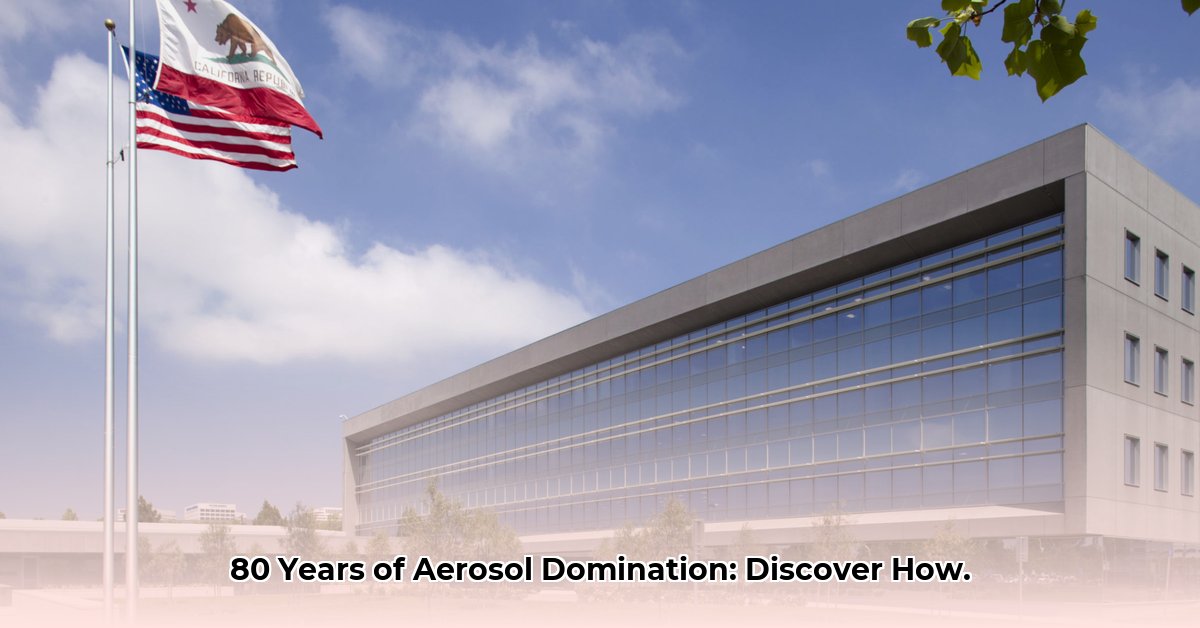
Aeroscience Corporation: A Legacy of Innovation
PLZ Aeroscience, a leading North American aerosol contract manufacturer, boasts an impressive 80-year history. Its transformation from a small car polish producer to an industry giant is a testament to strategic decision-making, technological innovation, and adaptability. How did this seemingly modest beginning blossom into market leadership? The answer lies in a combination of calculated risks, diversification, and a relentless pursuit of technological advancement.
From Humble Beginnings to Industry Giant
Founded in 1947, PLZ Aeroscience was an early adopter of aerosol technology, a bold move that laid the foundation for its future success. This early adoption, a significant risk in an unproven market, proved exceptionally lucrative. Production figures speak volumes: a respectable 3.3 million cans annually by 1978 skyrocketed to over one billion by 2010. This exponential growth wasn't accidental; it was strategically fueled by calculated acquisitions that enhanced production capacity, expanded market reach, and introduced valuable technological expertise. This raises a crucial question: How did PLZ Aeroscience consistently outperform its competitors during this period of explosive growth? The answer lies in their strategic approach to diversification and innovation.
The Secret Sauce: Diversification and Innovation
PLZ Aeroscience's success isn't solely attributable to its early adoption of aerosol technology. Instead, its strategic diversification across diverse product lines proved vital. From cleaning products and personal care items to industrial maintenance solutions and even food products, PLZ Aeroscience's portfolio is remarkably broad. This diversified approach mitigated market risks, ensuring stability even during economic downturns. This strategic diversification is a key differentiator, providing resilience against market fluctuations and ensuring sustained growth. But was this diversification enough to maintain market leadership? The answer lies in their commitment to innovation.
PLZ Aeroscience isn't just a manufacturer; it's an innovator. Its commitment to research and development is evident in its ability to manage over 2,500 different branded and private-label products. Constantly at the forefront of aerosol filling and packaging technology, the company has consistently evolved its offerings to meet the changing needs of the market. This unwavering dedication to R&D has been instrumental in maintaining PLZ Aeroscience’s market-leading position. This raises another critical question: How did PLZ Aeroscience effectively navigate the increasingly complex regulatory landscape associated with aerosol products?
Navigating the Regulatory Maze: Challenges and Opportunities
The aerosol industry faces a constantly evolving regulatory environment, demanding substantial investment in research, development, and compliance. However, PLZ Aeroscience has turned these challenges into opportunities, leading the charge in developing more sustainable packaging solutions. This proactive engagement with regulatory bodies has not only ensured compliance but also fostered innovation and cemented the company's reputation for responsible manufacturing.
Stakeholder Impact and Risk Assessment
PLZ Aeroscience's success is not an isolated event; rather, it positively impacts multiple stakeholders. We analyze both the short-term and long-term implications for key stakeholder groups below:
| Stakeholder | Short-Term Goals | Long-Term Goals |
|---|---|---|
| PLZ Corp Management | Operational streamlining; strategic acquisitions. | Investment in sustainable packaging R&D AI-driven market analysis. |
| Client Companies | Strengthening partnerships; enhancing supply chain transparency. | Collaboration on environmentally friendly solutions; joint ventures for new products. |
| Investors | Performance monitoring; assessing expansion opportunities. | Analyzing long-term ROI on R&D and acquisitions; considering environmental regulations. |
| Government Regulators | Ensuring compliance; promoting industry transparency. | Participating in policy discussions to improve aerosol safety and sustainability; promoting industry best practices. |
Potential risks to future success include:
| Risk Factor | Likelihood | Impact | Mitigation Strategy |
|---|---|---|---|
| Regulatory Changes | Moderate | High | Proactive engagement with regulators; continuous compliance updates |
| Competition | Moderate | Moderate | Continuous innovation; strategic acquisitions; portfolio diversification |
| Supply Chain Disruptions | Low | Moderate | Diversified sourcing; strong supplier relationships |
| Technological Advancements | Low | High | Continuous investment in R&D strategic partnerships |
PLZ Aeroscience's future success hinges on innovation, regulatory compliance, and consumer needs. Continued research into sustainable practices and market trends will be integral to its trajectory.
Improving Aerosol Contract Manufacturing KPIs
Key Takeaways: PLZ Aeroscience’s success highlights the importance of data-driven decision-making, continuous improvement, and stakeholder engagement in the aerosol contract manufacturing sector. These factors are critical to maintaining a competitive edge.
Choosing and Implementing Effective KPIs
Selecting the right Key Performance Indicators (KPIs) is crucial for optimizing operational efficiency and achieving business goals. Some essential KPIs for aerosol contract manufacturers include:
- Cost Per Unit (CPU): A core metric indicating production efficiency; lower CPU is desirable.
- Production Volume: Indicates overall production capacity and market share. Increased volume usually signals success.
- Overall Equipment Effectiveness (OEE): Measures equipment performance and highlights areas for improvement. Higher OEE values are targeted.
- Defect Rate: A critical metric reflecting product quality and compliance; near-zero defects are the goal.
- On-Time Delivery: Measures fulfillment of client commitments, impacting customer satisfaction and brand reputation; a 100% on-time delivery rate is ideal.
Effective KPI implementation requires a structured approach:
- Robust Data Collection: Implementing real-time data collection systems is paramount.
- Data Visualization: Utilizing dashboards for clear KPI visualization facilitates efficient analysis.
- Regular Data Analysis: Frequent analysis allows for swift identification of areas needing improvement.
- Benchmarking: Comparing performance to industry benchmarks helps identify areas for enhancement.
- Continuous Improvement: Implementing lean methodologies (such as Kaizen) optimizes processes and workflow.
- Adaptability: Adjusting KPIs and strategies based on real-time data is crucial for staying agile and responsive.
The Role of Technology and Stakeholder Engagement
Leveraging technology, including automation, AI-driven predictive maintenance, and advanced analytics, significantly boosts KPI performance. Transparent reporting builds trust with investors and clients, fostering strong and enduring relationships. However, balancing technological investment with risk assessment is crucial. Finally, regulatory compliance is paramount; deviations require immediate attention. Non-compliance results in substantial penalties and reputational damage.